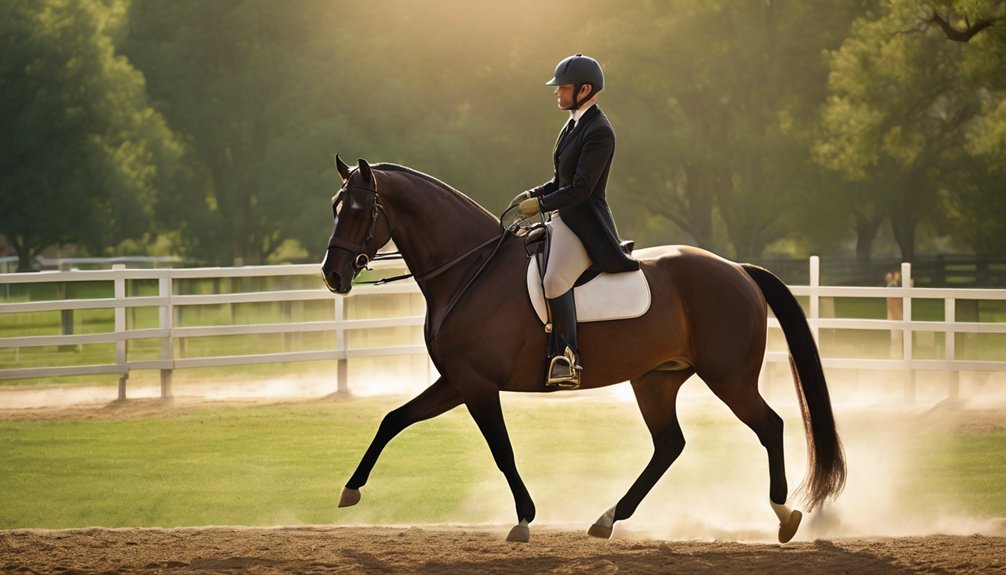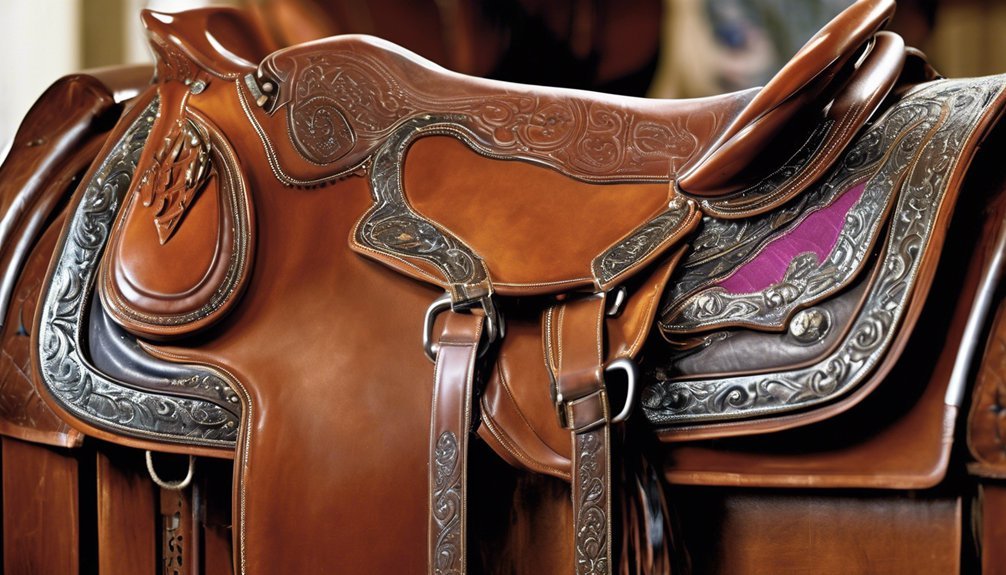
In halter horse competitions, judges focus on several crucial factors to assess a horse's suitability for breed standards. You'll find that ideal conformation is essential, but it's not just about looks. Movement and gait also play a significant role, reflecting the horse's training and athleticism. Grooming and presentation can't be overlooked either, as they indicate the level of care. Curious about how handlers influence the overall impression? Let's explore this further.
Key Takeaways
- Judges assess conformation to breed standards, focusing on balance, bone structure, and muscle development for soundness and health.
- Movement evaluation includes stride length, rhythm, and flexibility to demonstrate athleticism and overall fitness.
- Grooming quality, including a well-maintained coat and proper hoof care, reflects the owner's dedication and the horse's health.
- Handlers should exhibit clear communication and body language to enhance the horse's presentation and showcase a strong bond.
- Overall impression and ring presence, including confidence and engagement, significantly impact judges' perceptions and evaluations.
Ideal Conformation and Breed Standards

When you consider entering a halter horse competition, understanding ideal conformation and breed standards is essential.
You'll need to conduct a thorough conformation assessment to identify key breed characteristics that judges value. Each breed has its own unique standards, so familiarize yourself with these to ensure your horse aligns with them.
Look for attributes like balance, bone structure, and muscle development, which contribute to overall appearance and functionality. A horse with proper conformation not only showcases breed traits but also demonstrates good health and soundness.
Movement and Gait Evaluation
While assessing a halter horse, movement and gait evaluation plays a crucial role in determining its overall quality. Judges focus on several key aspects during gait analysis to ensure the horse exhibits ideal movement fluidity:
- Stride Length: A longer stride indicates good reach and efficiency.
- Rhythm: Consistent and smooth rhythm showcases the horse's training and natural ability.
- Balance: Well-balanced movement reflects a horse's conformation and physical fitness.
- Flexibility: A horse that moves freely demonstrates soundness and athleticism.
Paying attention to these factors not only enhances your horse's chances in the competition but also fosters a deeper connection between you and your equine partner.
Understanding movement is essential for any competitor striving for excellence in the ring.
Grooming and Presentation
Grooming and presentation are vital components of halter horse competitions, as they can significantly influence judges' perceptions of your horse. A horse with a shiny, well-maintained coat showcases its health and care, making a lasting impression.
Focus on coat condition by using effective grooming techniques, such as regular brushing and proper bathing. This not only removes dirt and debris but also promotes a healthy shine.
Pay attention to details like hoof care and mane and tail grooming; these elements can elevate your horse's appearance. Remember, a clean and well-presented horse reflects your dedication and commitment as an owner.
When you prioritize grooming, you foster a sense of pride and belonging within the halter horse community, enhancing your overall competition experience.
Handler's Role and Technique

As you step into the arena, the handler's role becomes crucial in showcasing your horse's strengths and qualities. Effective handler communication and technique consistency are key to making a lasting impression.
Here are four essential aspects to focus on:
- Body Language: Use confident, open postures to convey control and connection.
- Voice Commands: Clear, calm commands can guide your horse's movements and behavior.
- Timing: Synchronize your actions with the horse's pace to enhance its natural flow.
- Positioning: Stay close but not overwhelming; create a balance that highlights your horse's best features.
Mastering these elements not only enhances your performance but also fosters a deeper bond with your horse, making the experience truly rewarding.
Overall Impression and Ring Presence
When you enter the ring, the overall impression you create can significantly influence the judges' perception of both you and your horse. Your overall demeanor should radiate confidence; a calm, assertive presence draws attention and respect.
As you navigate the arena, ensure your posture reflects your confidence display—stand tall and move purposefully. Engage with your horse, showcasing a harmonious partnership that captivates onlookers.
Remember, judges aren't just evaluating your horse's conformation; they're assessing the connection and energy you bring. A positive ring presence can elevate your performance, making you memorable among competitors.
Frequently Asked Questions
How Do Judges Score Halter Classes Compared to Performance Classes?
Judges score halter classes based on conformation and breed standards, while performance classes focus on movement and ability. Understanding these halter scoring differences helps you appreciate the unique performance criteria each discipline values.
What Common Mistakes Do Handlers Make During Competitions?
Imagine a dancer forgetting their steps; similarly, common handler errors can trip you up. Improving presentation means staying calm, maintaining eye contact, and effectively showcasing your horse's strengths to leave a lasting impression.
Are There Specific Age Divisions in Halter Competitions?
Yes, there are specific age divisions in halter competitions. These categories often include yearlings, two-year-olds, and mature horses, allowing you to showcase your horse's development and achievements at various stages, making the competition more engaging.
How Important Is the Horse's Pedigree in Judging?
When considering pedigree significance, remember that a horse's lineage impacts its perceived quality. A strong pedigree can enhance your horse's value and competitive edge, making it crucial in the world of halter competitions.
Do Judges Consider Breed-Specific Traits in Their Evaluations?
Yes, judges definitely consider breed-specific traits in their evaluations. They'll reference breed standards and evaluation criteria, ensuring each horse exemplifies its unique characteristics. This attention to detail fosters a sense of belonging within the equestrian community.
Conclusion
In halter horse competitions, achieving success requires a keen understanding of conformation, movement, grooming, and the handler's technique. By focusing on these elements, you can elevate your horse's performance and impress the judges. Think of it as crafting the perfect Instagram post—every detail counts! So, whether you're polishing your horse's coat or fine-tuning your stance, remember that every little effort contributes to that all-important overall impression in the ring.





